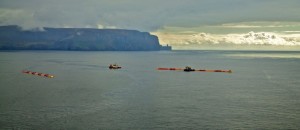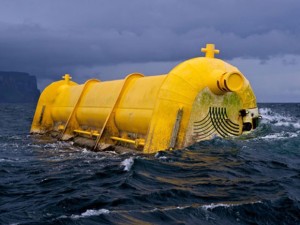A series of pioneering renewable wave energy technologies are currently being put to the test within Northern Scotland’s Orkney Islands. Private Island News takes a closer look.
The countless islands of Scotland are rarely far from the headlines of Private Island News – thanks in part to their extraordinary efforts to protect, preserve and promote marine and avian populations. This time, however, the country’s islands are making waves (literally!) for a different type of green-thinking: renewable energy production!
Scotland’s Orkney Islands are emerging as the perfect test site for cutting-edge renewable wave energy technology. Boasting wild weather conditions, mile upon mile of open seascapes, the waters surrounding the European Marine Energy Centre in Stromness have emerged as having one of the highest wave energy potentials in Europe – perfect for testing new renewable wave technologies.
Research into the capabilities of renewable wave energy is currently very much in an early stage. Due to a lack of funding and enthusiasm, Emeritus Professor Stephen Salter of the University of Edinburgh – the so-called Godfather of Wave Energy – estimates that research into wave energy is currently about 20 years behind its contemporary – wind power technology.
The future of wave energy looks bright, however, and the Managing Director of the European Marine Energy Centre (Emec), Neil Kermode, has a bold vision for his organization and the technology it’s testing. He hopes that the Orkney Islands will ultimately emerge as Europe’s wave energy capital, rivalling Aberdeen for significance within the North Sea energy market and making a difference to the environment the world’s islands and coastal communities in the process.
Emec is currently trialling three different technologies at its Ornkey Island testing ground, including Pelamis – a 180 metre-long steel sea-snake, a so-called oyster wave energy converter and The Penguin – an asymmetric tethered wave energy converter which resembles a boat – albeit with a protruding beak-like nose which gave the pioneering idea its name.
Whilst much remains unknown within this relatively new field of study, the experts have already been able to ascertain that as well as producing more predictable yields than offshore wind energy, wave energy technology has a much more positive effect on the environment, both in the construction phase and throughout its operation – an important factor given the amount of conservation work in the region.
Yet, despite the obvious environmental advantages of wave technology, it is still too early to tell whether one of the three technologies pioneered at Orkney will eventually emerge as a serious rival to offshore wind energy. Each of the different systems has its pros and cons, with cost efficiency, reliability, ease of repair and production capability just some of the factors the experts have to consider. Private Island News and Oceans&Islands promise to keep you informed of any important updates in this exciting field as soon as they come to us.
Have your say: Could harnessing the world’s waves provide an alternative to fossil fuels or are tried and tested methods such as offshore wind energy our best bet at saving the planet? Share your thoughts on our social media pages: Facebook, Twitter, Google+




